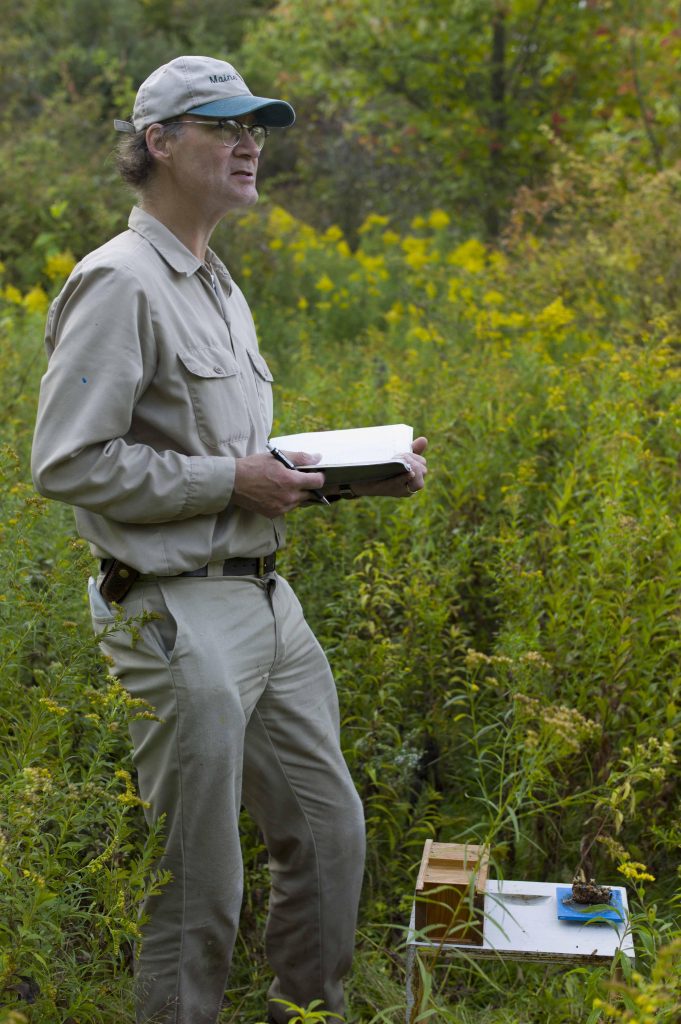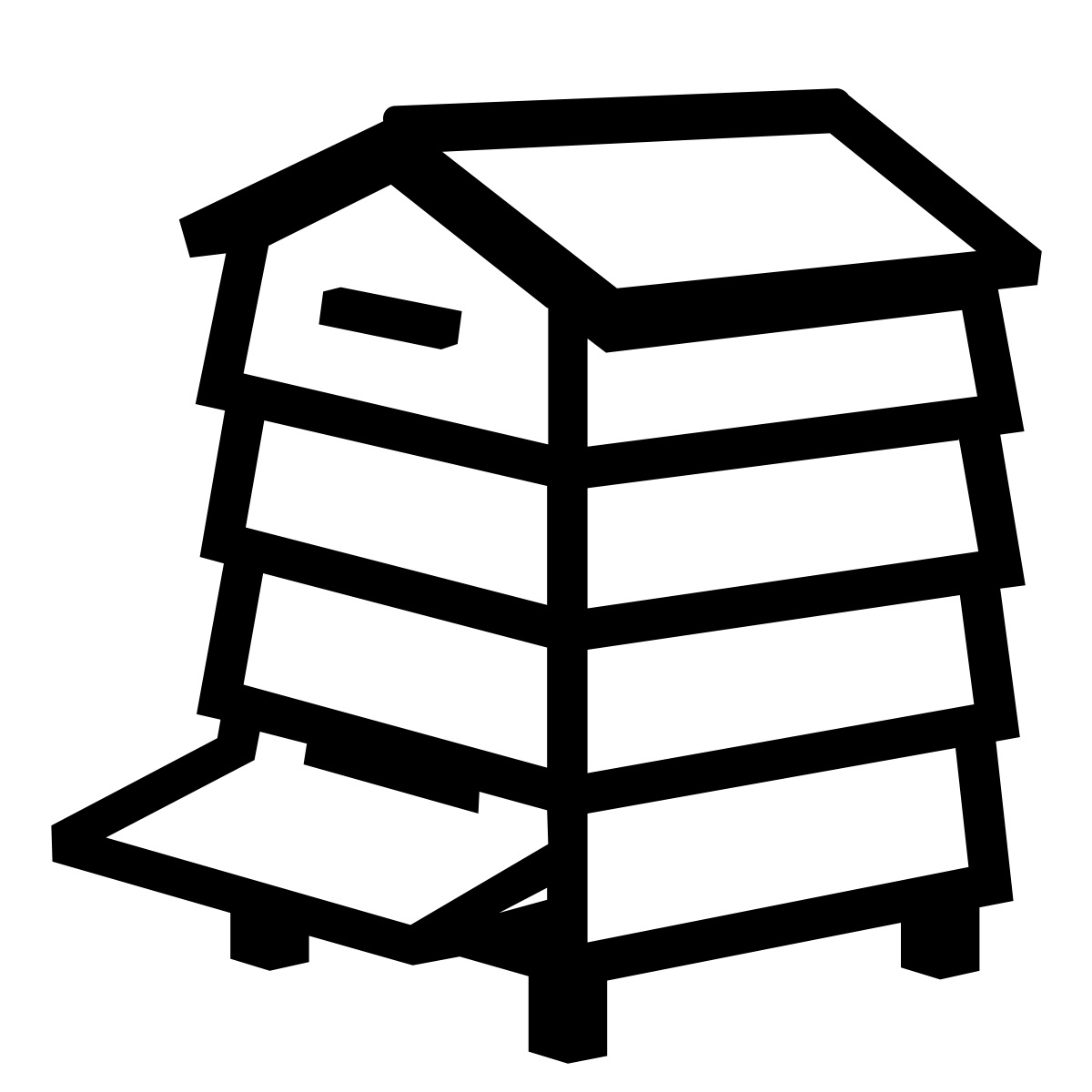Humans have kept honey bees in hives for millennia, but it is only in recent decades that biologists have begun investigating how these industrious insects live in the natural world. The Lives of Bees is Thomas Seeley’s new book in which he reports what he and other scientists are learning about the behaviour, social life, and survival strategies of honey bees when they live outside the hives of beekeepers. It also explains how wild honey bees may hold the key to lowering the alarming death rate of managed honey bee colonies.

Thomas Seeley is one of the world’s most prominent bee scientists and popular writers of fascinating books about the biology of honey bees. He is a professor in the Department of Neurobiology and Behaviour at Cornell University, which is in Ithaca, New York. This small city, located in the middle of New York state, is where Seeley has lived for most of the past 65 years. A feature of the book is that it describes when, where, and how he became intrigued with the puzzle of how honey bees live in the wild, and it describes how he has conducted his investigations on this topic over the past 45 years.
Ever since he witnessed an enormous, noisy swarm move into a tree cavity when he was a 10-year-old boy, Seeley has been fascinated by honey bees living on their own in hollow trees, rock crevices, and buildings. He has been studying them seriously since 1974. He is an authority on how honey bees live in the wild and is well qualified to tell us the story of just how they do this.
Virtually all of the many hundreds of books written about honey bees describe the lives of bees housed in hives and managed by beekeepers. What makes The Lives of Bees special is that it is only the second book to explicitly describe what we know about how colonies of Apis mellifera live on their own, in the wild. The first book, also written by Seeley, was Honeybee Ecology published in 1985 and, although it remains a valuable reference some 30 years on, the time is right for it to be superseded.

The intended audience of The Lives of Bees is anyone interested in learning about the true natural history of honey bees. Seeley draws on the insights from his own pioneering fieldwork as well as the scientific work of others to describe in extraordinary detail how honey bees live in nature. This book is written in such an easy-to-read, friendly style that it will appeal equally to the hobbyist beekeeper and to the professional biologist. This scholarly work provides graphs, tables, and detailed references to the scientific literature, as well as delightful photographs for everyone to enjoy.
The main aim of The Lives of Bees is to review what we know about how honey bees live in the wild, when they are free from the interventions of beekeepers. This helps us recognize how much we alter their lives when we keep them in our hives. Chapter One starts with a quote from an essay by Wendell Berry that expresses this key point ever so clearly: “We cannot know what we are doing until we know what nature would be doing if we were doing nothing”. Through reading this amazing book, anyone involved in the care of these important insects will learn ways to make changes in beekeeping practices that can improve the health and survival of his or her bees.
The book contains 11 chapters. The first two—titled “Introduction,” and “Bees in the Forest, Still”—explain the book’s purpose and review what we know about the existence of wild colonies of Apis mellifera in North America and elsewhere in the world. Chapters 3 and 4—”Leaving the Wild,” and “Are Honey Bees Domesticated?”—step back from the current biology of Apis mellifera to explain why, until recently, we have known so little about the natural lives of honey bees. Chapters 5 through to 10 review what we know about the interwoven topics of nest architecture, annual cycle, colony reproduction, food collection, temperature control, and colony defence in free-living colonies. These chapters show us that the inner workings of a honey bee colony have been shaped by natural selection for life in the wild, not in domestic settings. Finally, Chapter 11, “Darwinian Beekeeping,” offers practical suggestions of ways beekeepers can help their bees live closer to their natural way of life and thereby enjoy better health.
People who enjoy learning amazing facts about bees will treasure this book. In chapter 8, titled “Food Collection” the reader will be astonished to learn that a colony can search for food over an area of 100 square km/40 square miles. Even more astonishing is that a flying bee has a cruising speed of around 30 km per hour/18 miles per hour, so a 6 km flight (just under 4 miles) will take 12 minutes. This may not seem remarkable but to achieve this the bee travels 400,000 body lengths. In human terms, a 1.5-meter/5-foot tall person performing the equivalent would travel around 600 km/360 miles which is the distance between Inverness and Manchester.
I particularly like that this treatise pulls together a lot of well researched information gathered from wide ranging sources and makes sense of it all. Some of the beekeeping literature leaves one wondering what is the basis for a particular opinion or practice. Here there is no such ambiguity; the original sources of the information are carefully cited.
The final chapter, Darwinian Beekeeping, addresses the practical significance of this wonderful story of bees living in the wild. It offers ways for beekeepers to work in greater harmony with these remarkable insects by providing environments more suited to their nature and needs. Some of the suggestions are likely to resonate already with beekeepers, but it is surprising just how many things we do to our bees without recognizing that this would not happen in nature. An example is harvesting wax cappings, something that we beekeepers tend to do without thinking that our bees would recycle them, if they could, and so spend less energy producing wax. It costs a colony around 10 lbs honey to make 2 lbs wax and this is honey that is now unavailable for brood rearing and winter survival.
The Lives of Bees is a remarkable book. It is an essential read for every beekeeper who wishes to understand more fully the natural biology of the bees living in his or her hives.
The Lives of Bees: The Untold Story of the Honey Bee in the Wild by Thomas D. Seeley, published by Princeton University Press / Hardback, 376 p. (ISBN: 978-0-691-16676-6) £24.95 Available through Amazon.
Also, you can listen to Thomas talking about the Lives of Bees on Australian national radio.

